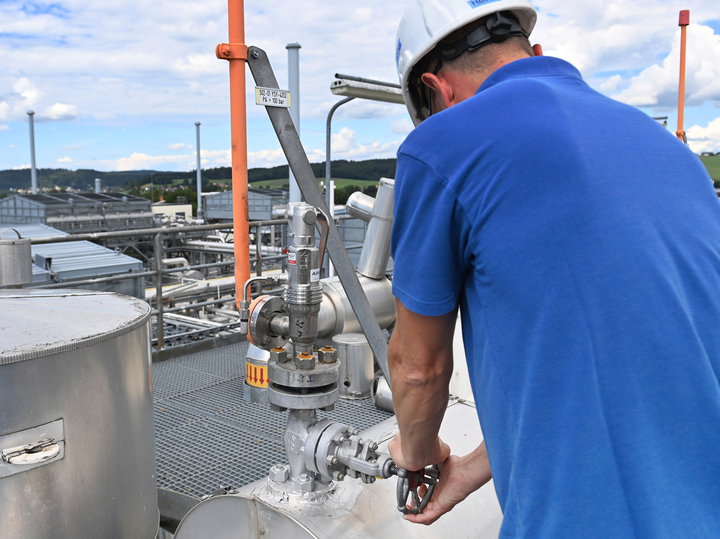Four whales of Russia: the picture of falling exports of oil, gas, fertilizers, gold is revealed
[ad_1]
Let’s make a reservation right away: now there is no available official statistics on oil and gas and exports in general, since the Federal Customs Service has not published them since April – in order to avoid “incorrect estimates, speculations and discrepancies”, as the head of the Federal Customs Service Vladimir Bulavin put it. Therefore, it is not clear where, in what volumes and for what amount Russia has sold anything since at least the spring of 2022.
The statistics of the Ministry of Energy regarding the production of raw materials – oil, gas, LNG, coal – are also closed. Accordingly, argues the head of the analytical department of AMarkets Artem Deev, for the corresponding estimates it is necessary to use figures from open sources (often sketchy), including data from the Ministry of Finance on budget execution.
“In addition, – notes Deev, – it is necessary to take into account the dynamics of prices for energy carriers in the world market and current quotations, according to which products are shipped abroad. For example, Russian Urals oil is not sold abroad at the cost of the North Sea Brent grade: our crude costs not $80, but $50-60 per barrel at the current discount level.”
Oil: exports are pinned down by the “ceiling”
With the official information for last year, everything is much simpler. Oil exports amounted to 231 million tons in 2021, which is 3.4% less than a year earlier, according to the Ministry of Economic Development. According to the latest forecast of the department, according to the results of the current year, the volume of deliveries will grow to 243.1 million, in 2023 – up to 250 million. However, these forecasts may well not come true.
Now the main risks are associated with two circumstances: a complete cessation of supplies to the EU by sea from December 5, as well as with the price ceiling of $60 per barrel that was launched at the same time. In 2021, the EU countries received 108.1 million tons of Russian oil (47% of all exports). Next year, these volumes may be reset to zero …
“Shipments to non-CIS countries were stable throughout 2022, and after December 5, from the moment the “sea” embargo was introduced, they fell, according to Bloomberg, by half at once – from 3.4 million to 1.6 million barrels per day, – says Artem Deev. – Deliveries through the Druzhba pipeline are stable, about 1 million barrels per day. At the same time, for the entire current year, only one-eighth of European volumes were redirected to China.
The Asian direction has not yet compensated for the drop in exports to the EU. Moreover, we are talking about a long-term trend associated with purely technical difficulties: infrastructure is needed (only one oil pipeline has been laid from the Russian Federation to China), large-scale deliveries by sea. The price ceiling and the ban on insuring ships with Russian oil scare off potential buyers, including those from “friendly” countries in the East.”
Accordingly, Deev sums up, the revenue part of the Russian budget will be short of at least 2 trillion rubles (oil and gas revenues) next year. And the treasury deficit will amount to 5 trillion rubles, instead of the planned 2.9 trillion (2% of GDP), which will require budget consolidation, that is, cuts in cost items. And this will be the result of a drop in exports only for oil, without taking into account the reduction in the supply of other commodities – gas, coal, and in the future – oil products.
According to the Federal Customs Service for 2021, oil brings Russia the most export revenue – 37%. Apparently, this proportion will continue in 2023, the only question is specific income indicators, how much they suit the Ministry of Finance and the budget.
According to the leading expert of the Center for Political Technologies, Nikita Maslennikov, in September-October, Russian oil supplies abroad were at the level of last year’s values, in November – even slightly higher, and then a decline followed: in monthly terms, according to Russian oilmen – by 10-15 %, and according to Bloomberg for the second week of December – twice.
In general, it is always quite difficult to judge the physical volumes of exports, and today, in the context of closed statistics and all sorts of secret schemes for circumventing sanctions, even more so. But it is obvious that foreign exchange revenues to the budget will decrease due to price fluctuations in the market. However, according to the updated budget rule, under any circumstances, the basic oil and gas revenues of the treasury will amount to 8 trillion rubles annually in 2023-2025, and the government does not disclose how this task will be solved.
Gas: China instead of Europe
Last year, Russia supplied 185.1 billion cubic meters of natural gas to non-CIS countries. Of these, 174.7 billion went to Europe, the rest went to China via the Power of Siberia gas pipeline. For the period from January 1 to the end of October 2022, total exports fell by 42.6%, or by 67.6 billion cubic meters, according to a Gazprom report.

In turn, Deputy Prime Minister Alexander Novak said that the volume of pumping to China through the Power of Siberia will reach 20 billion cubic meters this year. Today, Russian gas reaches consumers in Europe only along two routes – along one of the branches of the Turkish Stream (32.9 million cubic meters per day) and in transit through Ukraine (42.5 million cubic meters per day).
The explanatory note to the draft budget for 2023 and the planning period 2024-2025 contains a forecast according to which natural gas exports will fall by 31% in the current year, to 142 billion cubic meters, and in the next two years to 125 billion (annually) . And our interlocutor Artem Deev gives the following figures: for 11.5 months of 2022, exports decreased by 45.1%, production – by 19.6%, domestic consumption – by 5.2%.
“It is theoretically possible to make up for the export volumes lost in Europe at the expense of friendly countries, such as China,” says Nikita Maslennikov. – The throughput capacity of the Power of Siberia is increasing, Beijing has sharply increased its purchases of LNG this year. But in the case of LNG, shipping remains the “bottleneck”, Russia lacks its own vessels. True, 103 used tankers have been purchased, but it is not clear how long their resource will last.”
Fertilizers: revenue will remain at the level
According to the Federal Customs Service, in 2021 Russia exported more than 37.6 million tons of mineral fertilizers for a total of $12.5 billion. According to the Russian Foreign Ministry, as a result of sanctions, exports from March to September decreased by 38% compared to last year, and global consumers missed almost 8 million tons of raw materials. External deliveries of ammonium nitrate (-50%), potassium chloride (-24.8%) and carbamide-ammonia mixture (-32.2%) fell the most.

The Ministry of Industry and Trade also believes that with full satisfaction of the needs of the domestic market (a priority for Russian manufacturers), the volume of deliveries will decrease by approximately 10% in annual terms. According to the deputy head of the department, Mikhail Ivanov, “because of the good global situation,” export earnings will correspond to last year’s level.
Artem Deev cites Rosstat data on the production (not export) of fertilizers: for the first nine months of 2022, it generally decreased by 10%, while potash fertilizers began to be produced 29% less, but phosphorus and nitrogen, on the contrary, more – by 1, 2% and 4.2% respectively.
As for exports, the indicator of negative dynamics is the statistics of Russian Railways: the loading of raw materials for 11 months in non-CIS countries decreased by 3.6%. A real trifle, mind you. Taking into account the winter and spring sowing in Europe, we will not suffer particularly noticeable losses in the end, adds Nikita Maslennikov.
By the way, the sanctions against Russian mineral fertilizers turned out to be very interesting. At first, the US and the EU imposed official restrictions on exports, but they were quickly abolished. It quickly became clear that there was nothing to replace Russian fertilizers on the world market.
Moreover, in the summer, the US Treasury allowed the Russian Federation to conduct transactions for the purchase of agricultural products, including fertilizers. So Russian suppliers solved the problem with bank payments and settlements in dollars and euros. However, difficulties remain. In particular, they are associated with changed logistics and obtaining insurance for freight transportation.
Gold: sales halved
Last year, according to the Federal Customs Service, domestic exports of gold exceeded 302 tons of gold, amounting to $17.4 billion in price terms. According to the producers themselves, if in 2021 100% of mined gold went abroad, then from January-February of the current – only about 50%, due to sanctions and lower world prices. Accordingly, out of 300 tons (production remained approximately at last year’s level), 150 were sold, the rest remained on the balance sheets of companies.

Brussels approved the embargo on supplies to the EU countries in mid-July 2022. Previously, a similar ban on an individual basis (at the level of their governments) was introduced by the United States, Great Britain, Japan and Canada. And the London Precious Metals Association (LBMA) has withdrawn the Good Delivery status from Russian refineries, their products have lost their international certification. Bars can no longer be traded on the London Wholesale Market and Daily Fixing.
Meanwhile, geographically, exports move to countries that are not unfriendly – China, India, the United Arab Emirates. The story of Switzerland is also indicative, which (according to Bloomberg) in May “on the sly” bought three tons of gold from Moscow. Switzerland is in dire need of the physical metal, as it issues a lot of gold derivatives.
“Gold will always find its buyer, since it is a universal expression of value,” says Alexei Vyazovsky, Vice President of the Golden Mint House. – When currencies stop working, when stock markets collapse, everyone remembers the yellow metal. Now, against the backdrop of a sharp increase in geopolitical confrontation, interest is especially great. It will not be possible to completely block this trade.”
There is not much information on gold, but in any case, there will be losses in this industry, which is extremely specific and closed, says Artem Deev. Moreover, the cost of the metal is not high now – $1.7 thousand per troy ounce, and the discount is offered to buyers, primarily from China and India. And according to Nikita Maslennikov, the demand for domestic gold has grown significantly – both internal (after the abolition of VAT on bullion) and external. In particular, in Beijing they understand that in 2023 their real estate market may collapse and they are striving to invest to the maximum in an “eternal and imperishable” asset.
However, Maslennikov recalls, gold quotes are highly volatile: today Russia sells the metal at one price, and tomorrow, in the event of an increase in the US Federal Reserve rate and a strengthening dollar, it will have to trade at a much lower price.
Big Picture
Under any circumstances, summarizes Artem Deev, oil and gas remain the main commodities for Russia (together with oil products, the embargo on which is yet to come) – these three positions account for more than 50% in the structure of exports. A decrease in their deliveries abroad will inevitably lead to a reduction in budget revenues from raw materials. In November, they fell by 48%, and by the end of 10 months of 2022 – by 5% (non-oil and gas – by 6%).
“Problems with foreign trade dynamics are obvious: if in the second quarter, according to the Central Bank, we had a current account (balance of payments) surplus of $76.7 billion, then in the third quarter it was $51.2 billion,” notes Nikita Maslennikov. – This downward trend puts pressure on the ruble: if in January-November its real effective rate increased by 35.4%, then in November it fell by 2.4%, and only in the first two weeks of December – by 5%. And already in January-February, the exchange rate weakening of the ruble will be won back by high domestic prices.”
In the opinion of Vladislav Inozemtsev, director of the Center for Post-Industrial Society Studies, next year will be clearly worse for Russia than 2022, since the embargo on offshore oil supplies and other sanctions against the commodity sector have only just come into force.
With the price of the Urals grade trading at an average discount of $20 per barrel, the Russian budget (while maintaining the same volumes of oil sales on foreign markets) will lose up to 1.5-2 trillion rubles compared to 2022. Oil and gas revenues will amount to more than 10 trillion rubles. Gas exports will fall by at least 50%, and the average export price by more than 40%, respectively, the treasury will lose another 800 billion rubles in revenue.
According to Inozemtsev, the overall result will be an increase in the budget deficit from the expected 2.4-2.5 trillion rubles this year to 5 trillion next.
[ad_2]
Source link






